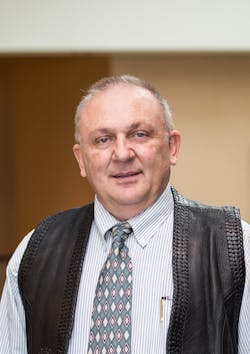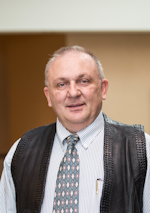
CLEO—the Conference on Lasers and Electro Optics—is and has always been primarily a "scientific" laser conference and exhibition. Once the premier industry show, it has been pretty quiet in recent years—especially when compared to SPIE Photonics West. One of the new things tried this year, which I would venture to guess was in order to increase attendance, was to change the show hours from the "typical" 10–5 to 2:30–8 on Tuesday, 10–6:30 on Wednesday, and 10–3 on Thursday. This was also accompanied by food and beverages on the show floor at various hours. While I did not get the actual attendance numbers, I would find it hard to believe that there is much upward momentum in attendance.
Still, it is a great place to catch up with current technology and at this conference, the vendors actually have time to talk in detail with prospective customers. It does not feel like you are being shuffled through a turnstile! There is a much keener interest in the "next great thing" and not as much interest in engineering advances or a "dressed-up" version of existing technology. In addition, even scientists appreciate an attractive, reliable, industrially packaged laser source (although they sometimes may have trouble or hesitate to pay for it!).
The new show format got mixed reviews. Some vendors thought that the hours, especially after 5 pm, were only interaction with other vendors. Others thought it gave them a great venue to relax and get to know prospects. All agreed that more food and booze on the show floor is a good thing!
There were talks on ultrafast lasers, including two given by industry veterans Dr. Michael Mielke of Trumpf and Dr. Herman Chui of Spectra-Physics, that seemed to draw a very interested crowd. Ultrafast lasers are a hot topic—not only in industrial applications, but also in scientific applications. These lasers are typically used for ablation applications, but can also be used for high-value marking applications if the product can bear the cost of using an ultrafast laser. For instance, Gary Firment of Laser-Micro showed me a dark mark made on medical-grade stainless steel that was done in 10 s with a picosecond laser. The mark is annealed, having passed the salt spray and boil test, so it is useful on implants and other critical components. Experience with nanosecond lasers suggests that this same mark would take many times longer with a typical nanosecond, 1µm wavelength marker.
I am always interested in hearing your thoughts concerning laser micromachining, the laser industry, comments on entrepreneurial endeavors, etc. AND … we are always looking for fresh, publishable material. Please feel free to contact me at [email protected].

Ron Schaeffer
Ron Schaeffer, Ph.D., is a blogger and contributing editor, and a member of the Laser Focus World Editorial Advisory Board. He is an industry expert in the field of laser micromachining and was formerly Chief Executive Officer of PhotoMachining, Inc. He has been involved in laser manufacturing and materials processing for over 25 years, working in and starting small companies. He is an advisor and past member of the Board of Directors of the Laser Institute of America. He has a Ph.D. in Physical Chemistry from Lehigh University and did graduate work at the University of Paris. His book, Fundamentals of Laser Micromachining, is available from CRC Press.